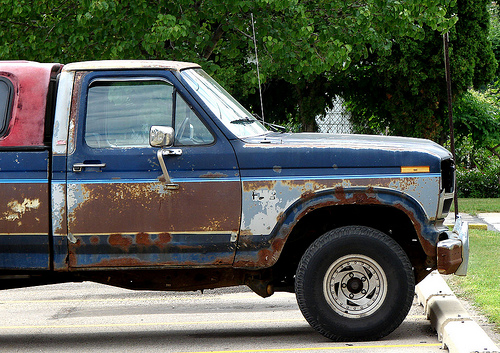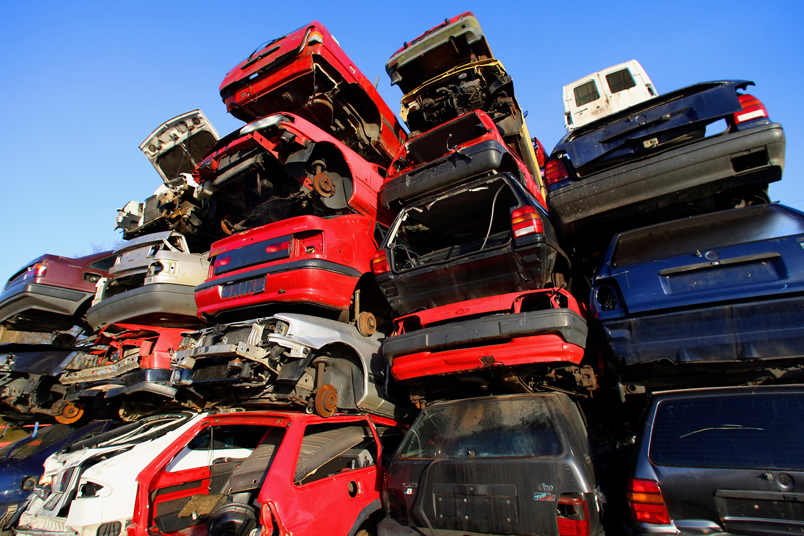
rusty Ford F-150 pickup truck, by Flickr user merobson
This morning's Detroit News lists the amount of cash each state has gotten thus far under the Car Allowance Rebate Systems (CARS) program, better known as "Cash for Clunkers".
The paper notes, "Michigan ranks No. 1 in the nation ... with $34.4 million requested from the federal government as of Tuesday." Following Michigan are Ohio ($29.3 million), California ($26.4 million), Minnesota ($26.2 million), and Texas ($25.0 million).
Knowledge vs data: Beware!
But there's data, and then there's knowledge. Michigan and California have a lot more people than, say, Rhode Island. Just listing total dollars received by state doesn't tell you a lot about how each state's residents really benefited.
So we dug up population data for each state (from 2006) online, and calculated how much clunker cash each state has received per resident. Which should roughly translate to how likely the state's vehicle owners were to take advantage of clunker cash, right?
Well, that little exercise paints a somewhat different picture. Turns out that Minnesota, at $5.06 per capita, got 10 times as much for each of its residents as Mississippi, which came in at just 50 cents.
Here's where the data get interesting. The 10 states that got the most clunker cash per capita--Minnesota, North and South Dakota, Wisconsin, Maine, New Hampshire, Michigan, Iowa, Nebraska, and Vermont--are all in cold Midwestern and Northeastern regions.
The bottom five states, on the other hand--after Mississippi, the list in ascending order includes Nevada, Hawaii, Wyoming, and California--are all in considerably more temperate areas.
Clunker winners vs losers: Why?
So why should Minnesotans get 10 times the cash that Mississippians? One word: RUST.
We suspect that the qualifying clunkers from states that salt their roads when it snows are in much worse shape than those in the Sunbelt, where it's not uncommon to see solid old cars in daily use even after 25 years.
We're open to other interpretations of the data. And as the program continues, the order of states may change. But for the moment, that's our theory and we're sticking to it.
Leave us your thoughts in the comments section. And check out yesterday's remarkably popular piece, Cash For Clunkers: The Data On Why It's Working.

Clunkers
[Detroit News, Census Bureau; photo by Flickr user merobson]













